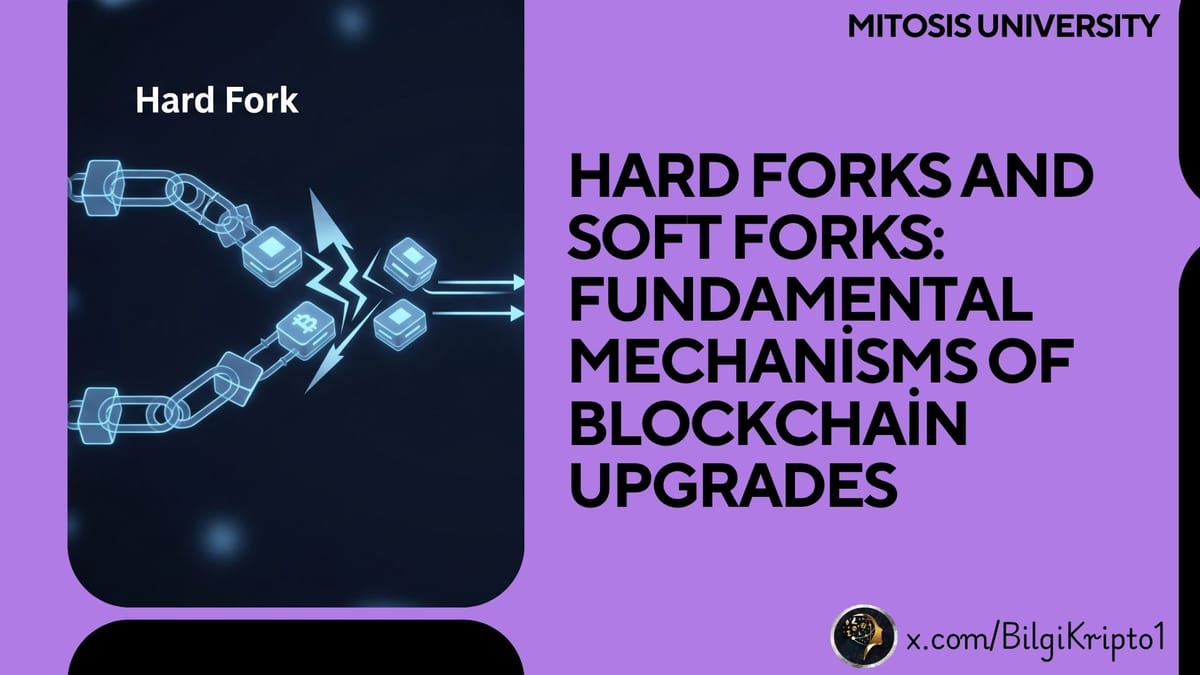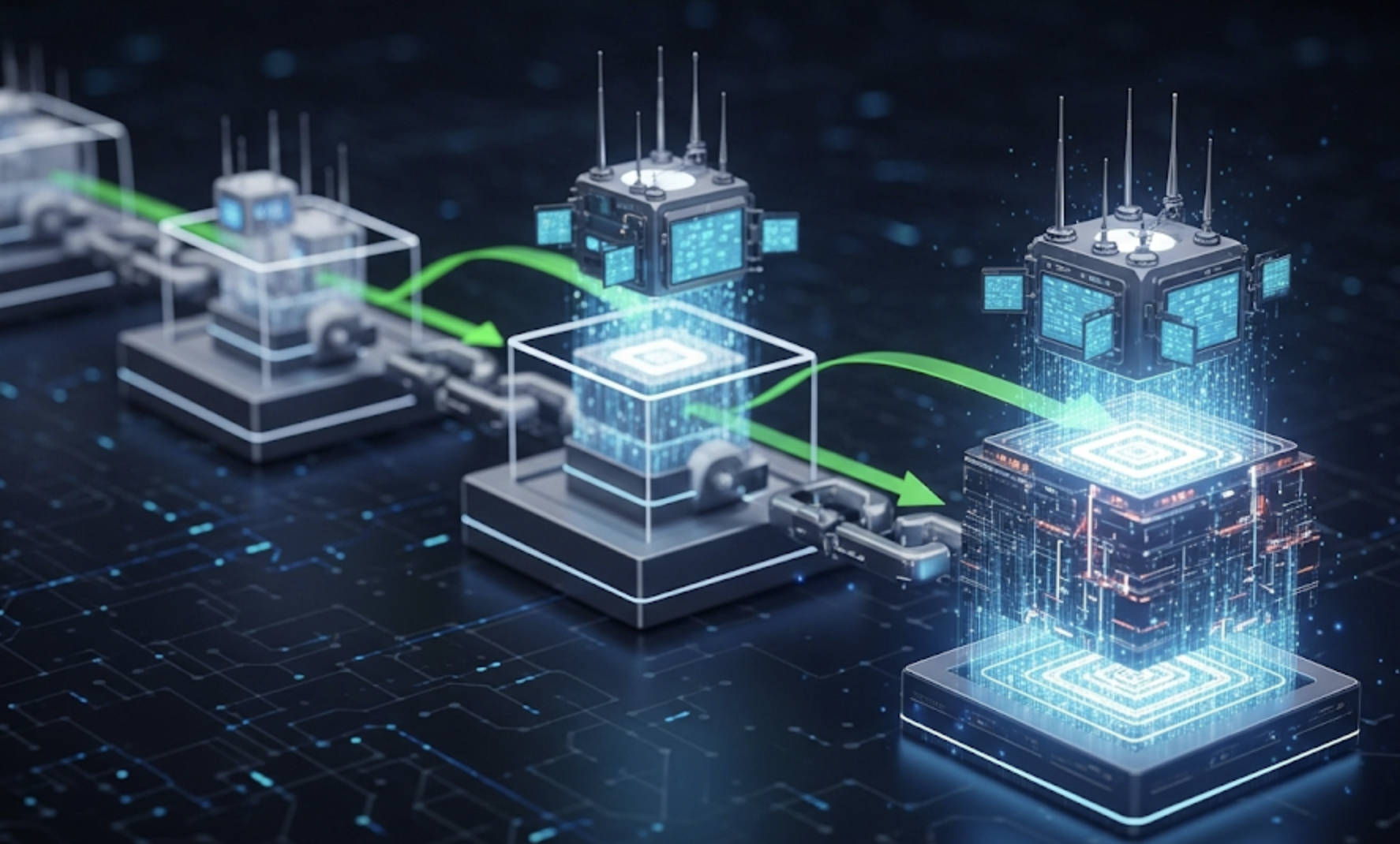Hard Forks and Soft Forks: Fundamental Mechanisms of Blockchain Upgrades

In the digital age, regularly updating the apps on your smartphone is a common and natural process. However, in the world of blockchain technology and cryptocurrencies, the situation is somewhat more complex. Decentralized structures mean that how updates are made and implemented involves technical details that differ significantly from other digital systems. This is where hard forks and soft forks come into play. In this article, we will explain in detail what hard and soft forks are, how they work, their differences, and their impact on the crypto ecosystem.
Decision-Making Process and Participants in a Blockchain Network
When upgrades are made on a blockchain network, there is no central authority. The decision-making process and governance happen through the cooperation of different participant groups. Therefore, for forks to be effective, the support of important actors in the network is required.
1. Developers
Developers are responsible for creating and updating the software of the network. In open-source projects, anyone can propose changes to the code, and existing developers review these proposals and accept or reject them. For example, Bitcoin Core developers determine the software rules of the network.
2. Miners
Miners secure the blockchain and validate transactions. In Bitcoin, miners create blocks of transactions and add them to the chain in return for block rewards. If miners do not adopt new rules, upgrades may not reflect on the network.
3. Full Node Users
Full nodes are computers that store the complete copy of the blockchain and validate transactions on the network. These nodes support the network and enforce the rules. Most users, however, use light nodes, which do not hold the full blockchain but can perform transactions.
These participant groups often overlap. For instance, a miner can also be a developer or a full node operator.
What is a Fork? Software and Network Divergence
A fork is when a software or blockchain’s code is modified in a way that diverges from the original project. In other words, a fork creates two separate paths from a single project.
For example, if a software team experiences disagreements about the direction of the project, one group might create a new version with different features. This new version then develops independently from the original.
In the blockchain world, forks are divided into two main types: hard forks and soft forks.

What is a Hard Fork?
Hard forks are backward-incompatible protocol changes. That is, new rules conflict with old rules, and nodes running the old version cannot communicate with nodes running the new version. As a result, the network splits into two, creating two separate blockchains running in parallel.
How Hard Forks Work
Imagine a hard fork happening at block 600,000. Up to that point, all nodes share the same blockchain. After the fork, nodes that follow the old rules track one chain, while nodes following the new rules track another.
If you had 5 Bitcoins before the fork, those coins exist on both chains because your private keys remain the same, allowing control over coins on both networks.
Historical Example: Bitcoin and Bitcoin Cash
In 2017, Bitcoin underwent a major hard fork due to scaling disagreements. The network split into two, with the new network continuing as "Bitcoin Cash." Bitcoin supporters wanted to keep the 1 MB block size limit, while Bitcoin Cash supporters wanted to increase it.
This fork resulted in users having coins on both BTC and BCH wallets. Hard forks are commonly used in cases of community disagreements and major protocol changes.
What is a Soft Fork?
Soft forks are backward-compatible upgrades. In this case, new rules are designed to be compatible with old rules. So, updated and non-updated nodes can still communicate with each other.
Example of a Soft Fork: Segregated Witness (SegWit)
SegWit, implemented on Bitcoin in 2017, is a good example of a soft fork. This upgrade changed the structure of blocks and transactions but older nodes could still validate blocks. Thus, new features were added without splitting the network.
Advantages of Soft Forks
Soft forks prevent network splits and maintain user experience and network stability. However, flexibility is more limited compared to hard forks because changes must remain compatible with old rules.

Differences Between Hard Forks and Soft Forks
| Feature | Hard Fork | Soft Fork |
|---|---|---|
| Compatibility | Backward incompatible | Backward compatible |
| Network Status | Network splits, two parallel chains form | Network does not split, single chain continues |
| User Impact | All users must update their software | Software update is optional |
| Community Division | Can divide the community | Usually no community division |
| Example | Bitcoin and Bitcoin Cash fork | Bitcoin SegWit upgrade |
Hard or Soft? Which Fork is Better?
Both types of forks play crucial roles in the evolution of blockchains. Hard forks are preferred for major, backward-incompatible changes, while soft forks are used when new features are added without breaking compatibility.
For example, if there is a community disagreement requiring irreversible changes, a hard fork is chosen. But if avoiding network splits and preserving compatibility is important, a soft fork is the solution.
Conclusion: Forks are Key Mechanisms in Blockchain Evolution
In decentralized networks without a central authority, protocol upgrades are complex. Hard forks and soft forks are fundamental mechanisms that enable these upgrades.
Thanks to these mechanisms, blockchain networks can add new features, fix security vulnerabilities, and evolve according to community needs. Without hard and soft forks, blockchain technology would be stuck with immutable rules like centralized systems.
Major changes and debates in the blockchain world revolve around these fork processes. Therefore, understanding how hard and soft forks work and their differences is essential for anyone looking to master crypto technology



Comments ()